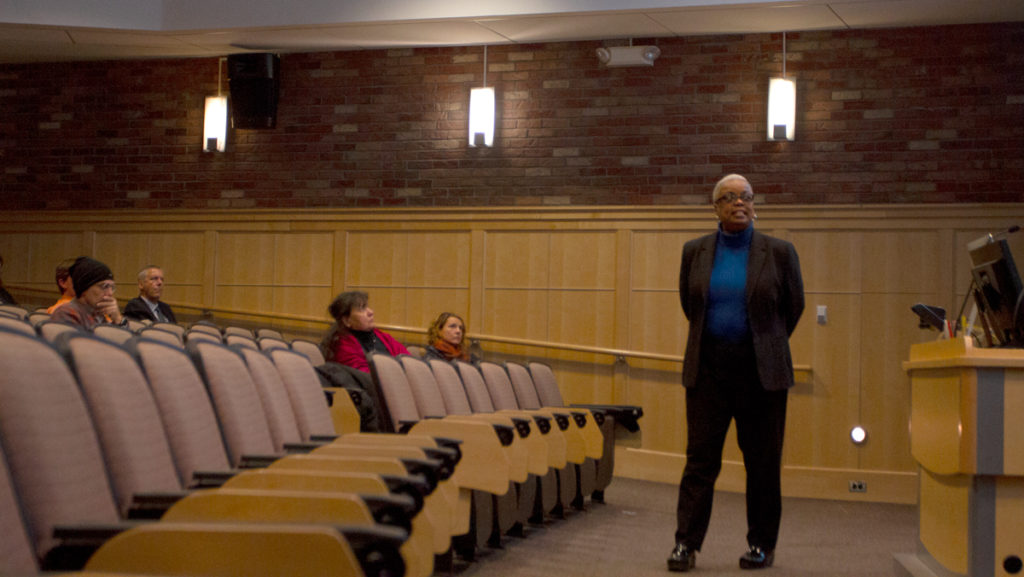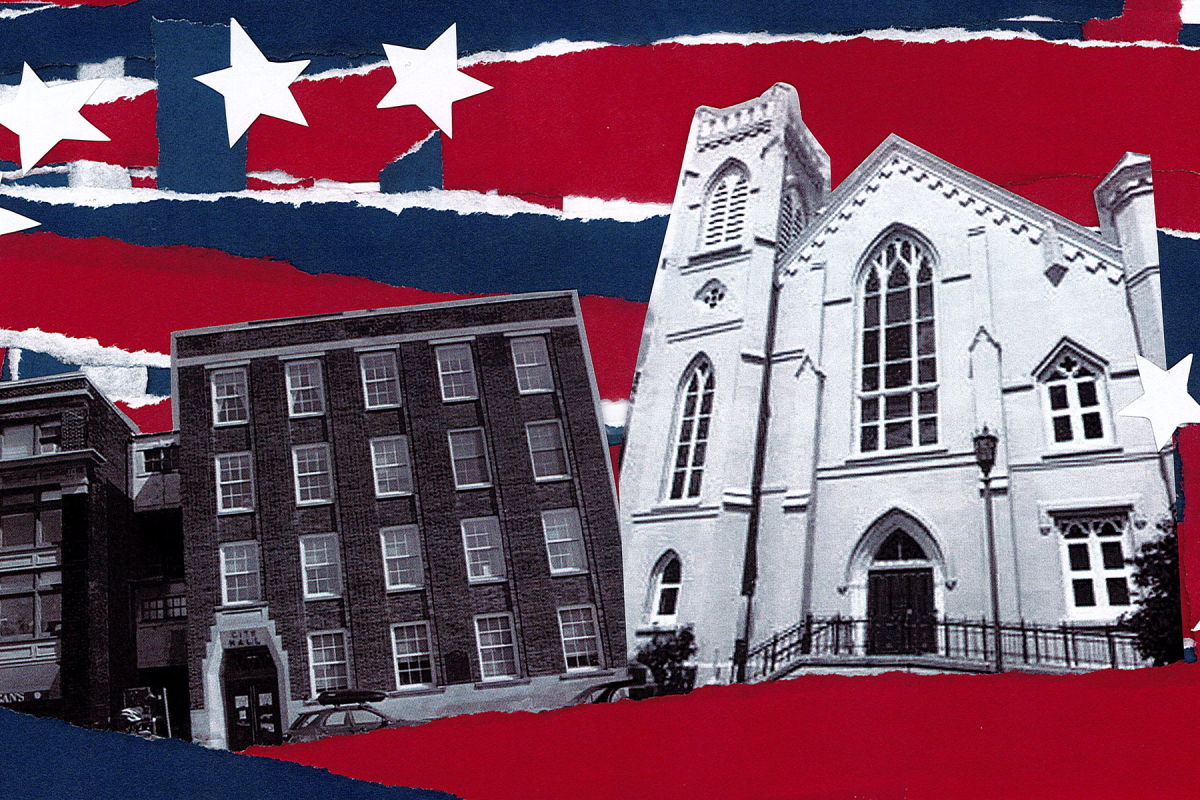The Imagining Ithaca co-chairs presented an update on the work of the strategic planning steering committee Feb. 5 that included the current vision and mission statements for the college and the themes for the plan’s working groups.
Approximately 60 people attended the presentation. Throughout the spring semester, strategic plan working groups will be responsible for using feedback from the college community to focus the strategic goals of the college in accordance with the vision, mission statements and values that the steering committee is developing.
La Jerne Cornish, provost and vice president for academic affairs and co-chair of the steering committee, said the goal of the steering committee and working groups is to produce a list of goals and practical steps to take toward developing the plan in time for the Board of Trustees meeting in May.
“The work that we have to do for the spring is the hardest part of the work,” Cornish said. “The working groups will be working fast and furiously over the course of the semester.”
Cornish said feedback from the college community directed the committee as it created the current versions of the mission and vision statements and the values list. Since the start of the strategic planning process, the committee has been collecting feedback at informational events. The strategic planning committee has already presented updates to smaller groups at the college, including the Staff Council and the Faculty Council, and it plans to present to more in the coming weeks. Cornish said the committee welcomes comments and questions at all events.
The themes for the strategic plan are the most recent development of the strategic planning committee and were announced Jan. 30 to the college. Jason Freitag, presidential fellow and associate professor in the Department of History and co-chair of the steering committee, said the themes are the organizational principles that will guide the working groups as they create measurable goals for the next five years at the college.
Freitag said the themes are based on five common desires the committee found in community feedback: the need for change, the need to increase national and international recognition, the need for interdisciplinary and community partnerships, and financial and environmental sustainability.
The three themes are Interconnections Among Disciplines, Schools, Partners; Evolution of Students, Curriculum, College; and Investment in People, Place, Planet.
Freitag said the committee recognizes that the themes overlap, but they view it as an advantage.
“As a matter of fact, the relationships between these themes is a feature,” Freitag said. “We know that these themes talk to each other, and the steering committee is trying to make the most that we can of these connections.”
Cornish said the committee found a consistent thread of a desire for a better world in community feedback. As they developed the new vision statement, the committee members wanted to make it aspirational and directed toward the future.
The new version of the vision statement is, “Inspiring bold thinking to create thriving communities.”
Cornish said the mission statement should describe why the college makes certain decisions and what makes it unique, so it should remain relatively constant.
“One would hope that the mission has legs for life,” Cornish said. “I would say it’s not normal to change the mission statement all the time.”
The new mission statement says, “Engage, explore and empower through theory, practice and performance.”
Cornish said that the committee has developed a list of values that will be turned into a values statement for the college and will act as a list of general principles to guide decision making at the college.
“The values statement will become like our constitution,” Cornish said. “It will guide how we act. … They will be something upon which we can uphold our work.”
Senior Anna Gardner said the meetings and working groups allow students to help shape the future of the college.
“It was good to hear what the steering committee has come to so far,” Gardner said. “I think this is the point now where, before when the steering committee was doing all this planning ahead of time, it was hard for students to come forward and offer their help or their ideas, but now that we’re kind of getting to the more concrete stuff, I think this is the point where we can step up and fill these spots.”
Freshman Daniella Leventhal said the meeting helped her understand what the goals of the college are and how they are changing.
“I found it interesting being a student, it was kind of like a curtain being pulled away to see the vision of the school itself and how the staff comes together to come up with all these ideas on how to best make the institution work,” Leventhal said.
Less than five students attended the presentation. Cornish said that although she was pleased with the turnout for the event, she wished the strategic planning process could involve more students directly.
“We would love for students to set up a venue and invite us and we’ll show up,” Cornish said. “We love to talk with students and … we want more students involved in this process.”








